| Parish
Church of St Lawrence Canon Pyon Herefordshire |
Canon Pyon is a small civil parish in the County of Herefordshire and takes its
name from the local Pyon Hill. The only other Pyon to be found in England is its
local neighbour Kings Pyon.
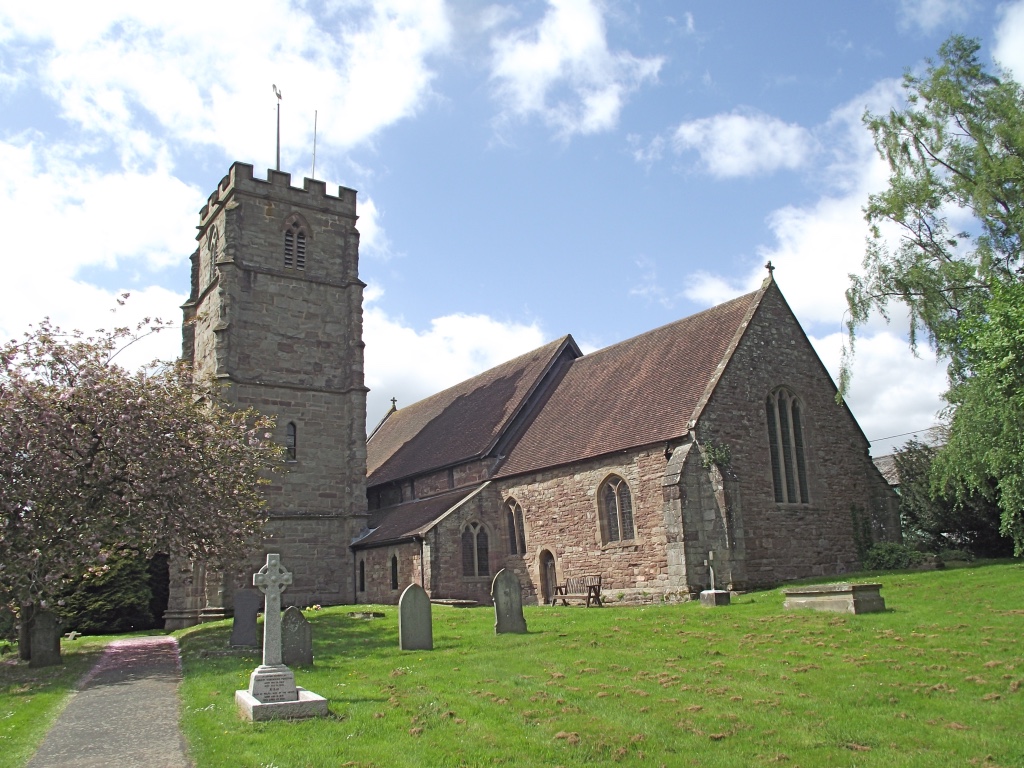
The Parish Church of St Lawrence (also spelt St Laurence) is in the Diocese of Hereford.
The church is a Listed Grade 1 building from 2nd September 1966. It has had two
Victorian restorations 1865 and 1897.
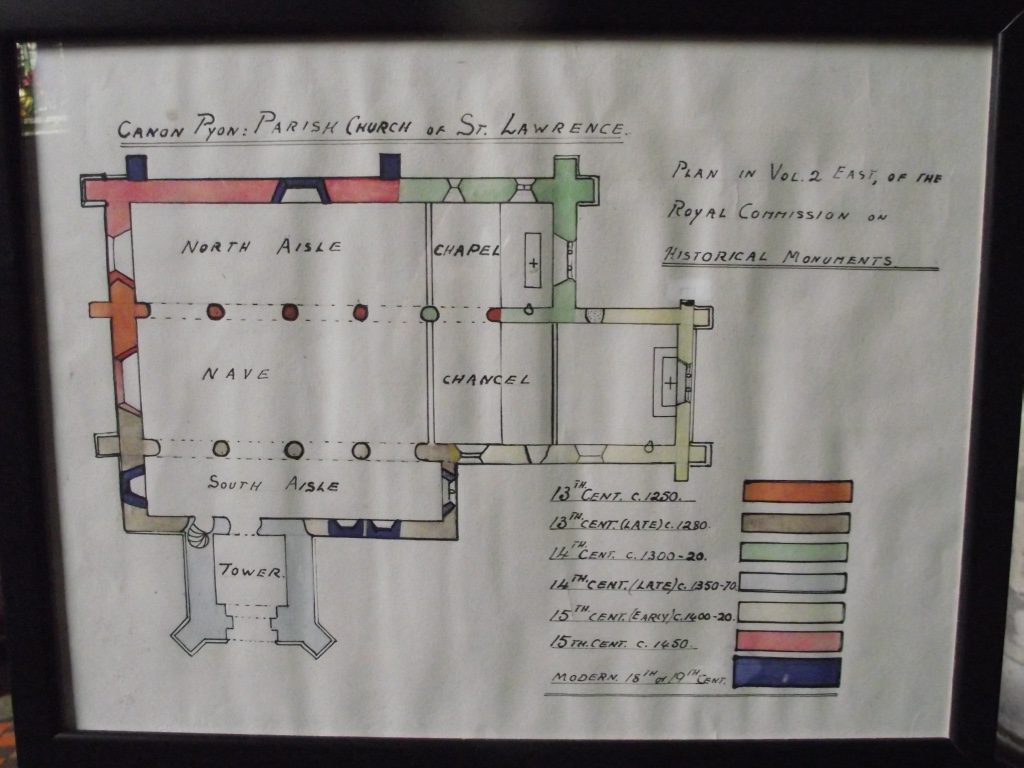
This was the first church that the Heritage Group visited where they were intrigued to
discover a remarkable and most unusual heating system that was used for warming
the church, possibly installed when it had restoration work carried out in 1851.
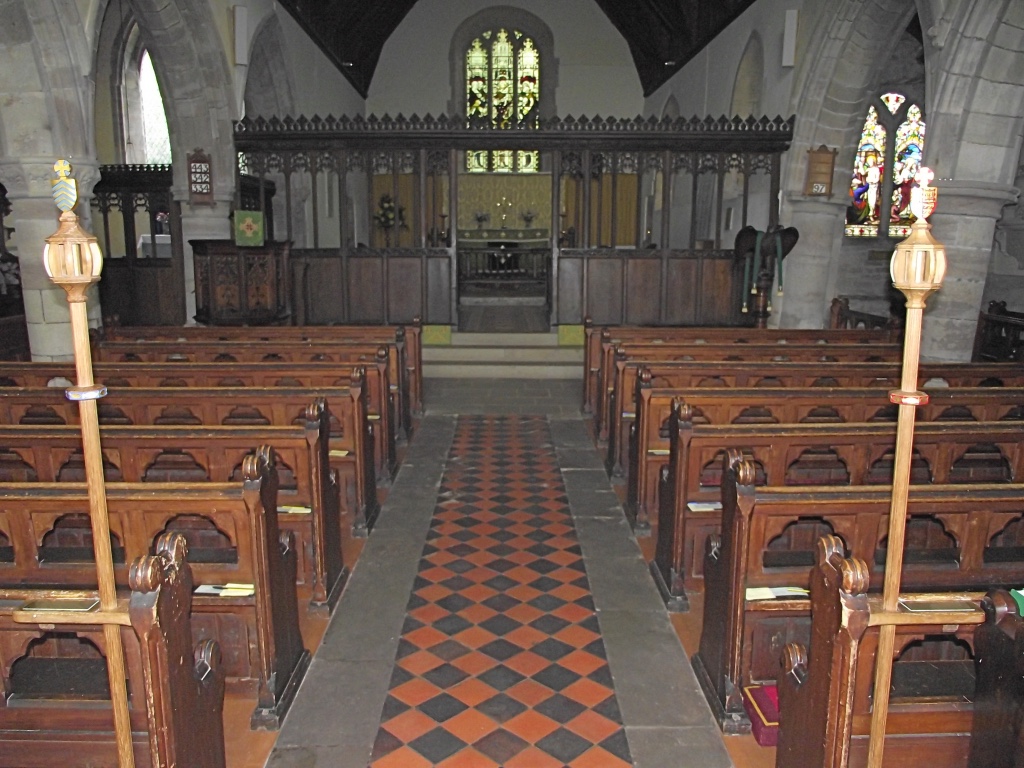
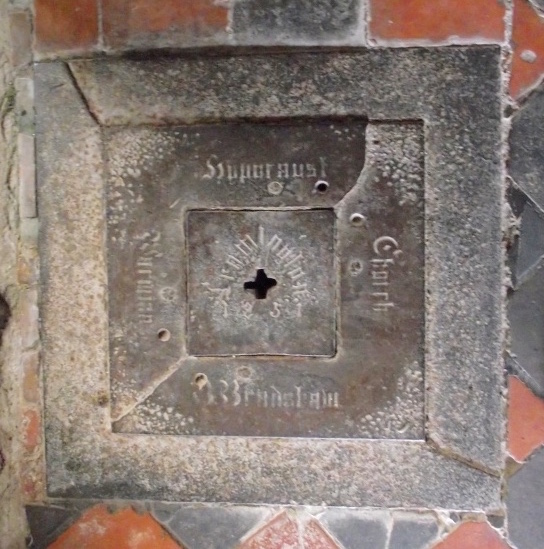 |
Built into the floor of the aisles in the Nave are cast iron floor plates each approx 400mm square with a centre lift out section. Each floor plate covers a deep pit, with brickwork forming the sides of each pit. The wording on the floorplate reads, Hypocaust Church Warming B Bradshaw Leamington 1851 This has been the first church found by the Heritage Group where the Hypocaust warm air heating system has been installed by Benjamin Bradshaw of Leamington Warwickshire. Showing the date of 1851 it is the earliest example of an underfloor warm air hypocaust system so far discovered by the Group. |
The warm air heating system is based upon the Hypocaust method used by the Romans when they warmed their Villas and Bathhouses.
The Roman Hypocaust had a furnace which circulated the hot flue gases through floor voids and thence up through ducts or
chimneys built into the walls to rise up and exit to atmosphere. The hot flue gases heated the solid floors and walls
which then radiated their heat into the space to be heated.
The heating system in St Lawrence uses a similar method but has 'fire pits' built into the floor of the aisles housing small brick furnaces.
Underfloor flue ducts constructed in brickwork are used to remove and transfer the flue gases from each hot pit through the brickwork
Church before dispersing the flue gases up through the tall chimney located in the corner of the Tower entrance lobby.
|
1858 Article
from the Northants Architectural Society. The Hypocaust
method for warming Churches. The first written record of using the
hypocaust has been found in an article written in
1858 by
the Northampton Architectural Society reporting to
a sub-committee on various methods of heating
churches. Reference
is made first to an under-floor method of heating
that used a metal stove sited in a floor duct. The
chimney from the stove continued in the floor duct
to warm the air which was then fed up through the
floor gratings to warm the church. The
article then continues that this under-floor
method was also adopted with modifications and
with success from the ancient roman hypocaust. It states that the furnace was
located outside the building below the floor level
of the church in an arched chamber and that ducts
formed under the aisles in the Nave that conveyed
the smoke and hot air towards a brickwork flue
built in the tower to carry away the hot gases to
atmosphere. The article
also states that a fire hole burning coal or coke
should be provided at the base of the chimney to
provide extra draught. "The
application of
this method of heating was carried out by Mr
Mitchell a builder of Leamington, and by Mr Bradshaw
also a builder of
Leamington. Several of the churches which had the
hypocaust principle method installed are mentioned
in the counties of Warwickshire, Leicestershire and
Northamptonshire".
|
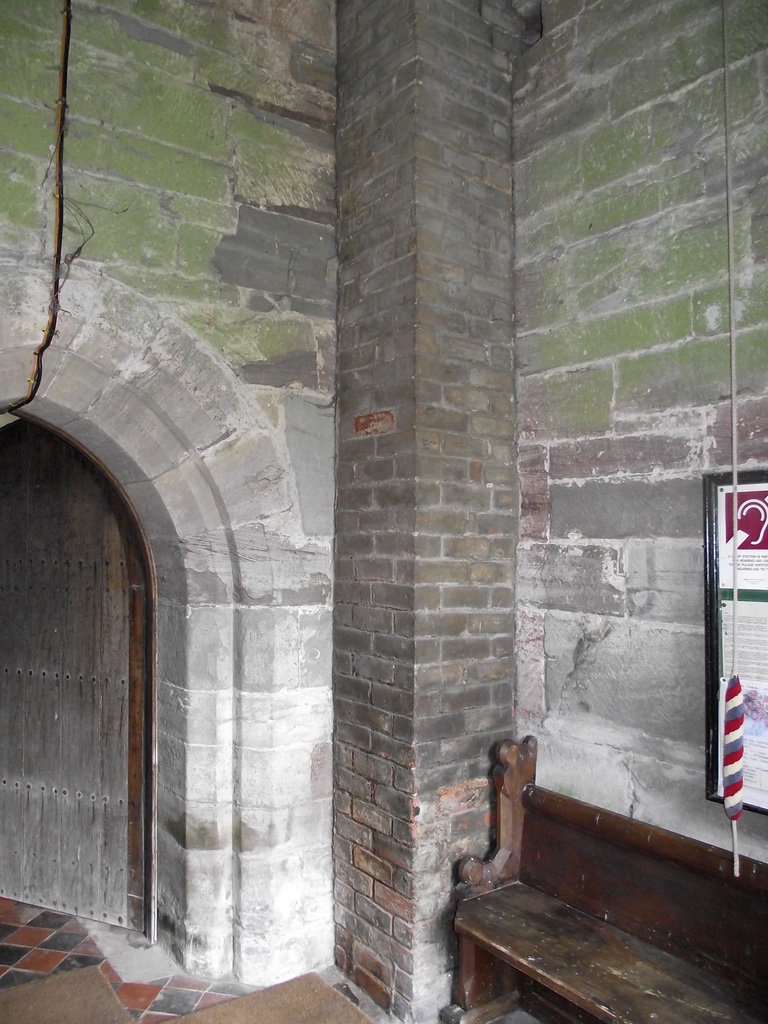 |
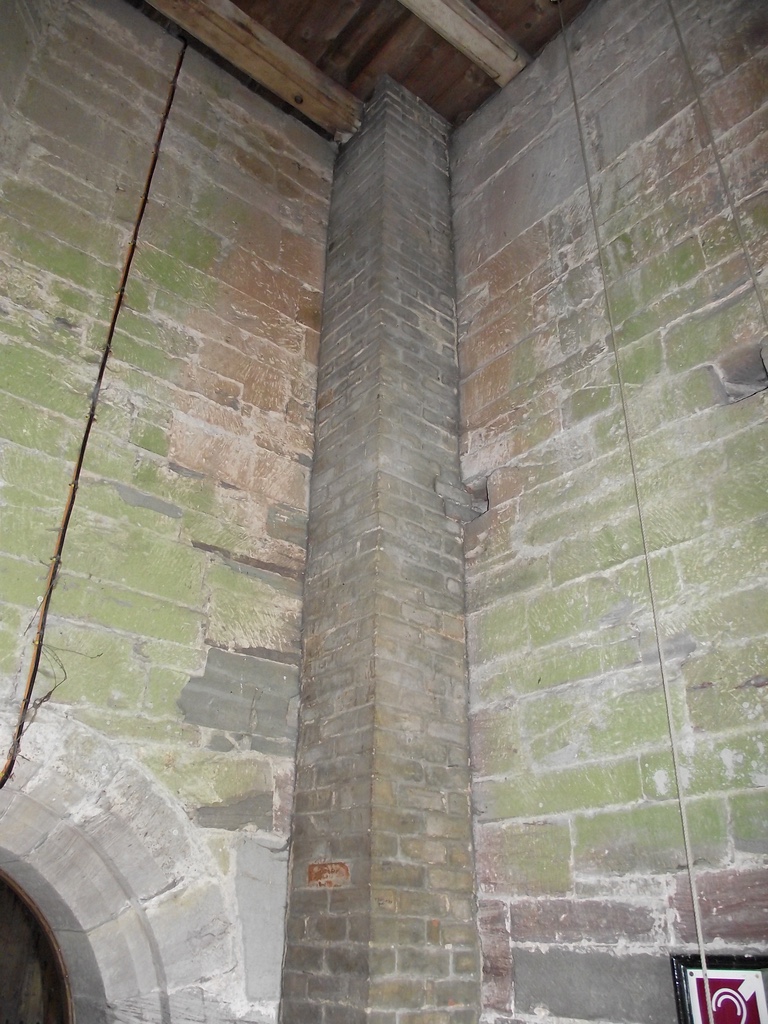 |
Checking the census records for Leamington Warwickshire 1851, 1861 & 1871 lists Benjamin Bradshaw
as a Builder employing many men and boys. Born in Daventry Northamptonshire.